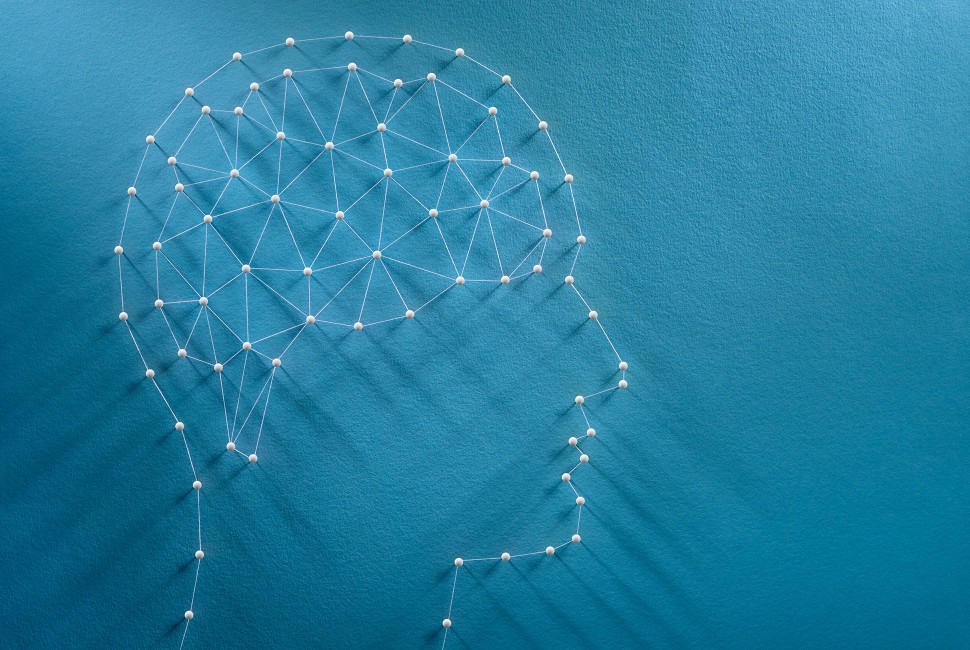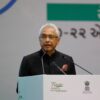Scientists discover key features of language sites that could help preserve function after brain surgery

When surgeons perform brain surgery on people with brain tumors or epilepsy, they need to remove the tumor or abnormal tissue while preserving parts of the brain that control language and movement.
A new Northwestern Medicine study published in Nature Communications may better inform doctors’ decisions about which brain areas to preserve, thereby improving patients’ language function after brain surgery. The study expands the understanding of how language is encoded in the brain and identifies key features of critical sites in the cerebral cortex that work together to produce language.
If you think of the brain’s language network as a social network, scientists have essentially found the person who is the link between lots of subnetworks of people. They wouldn’t know each other if not for this single person. In the brain, these “connectors” serve the same function for language. If the connector sites were removed, the patient would make more language errors after surgery — such as difficulty naming objects — because the subnetworks couldn’t work together.
Brain signals from patients with brain tumors and epilepsy
Northwestern scientists identified the critical language connector sites by recording electrical signals from the cortex of the brain in patients with epilepsy or brain tumors while the patients read words aloud. Investigators then analyzed the signals using graph theory methods and machine learning to predict which sites in the network were critical.
“This discovery could help us be more precise and efficient when we’re mapping language sites before surgery,” said corresponding author Marc Slutzky, MD, PhD, professor of Neurology in the Division of Comprehensive Neurology and a Northwestern Medicine neurologist. “It could help us augment the way surgeons do this mapping, so ultimately it could potentially shorten the time needed for stimulation or possibly eliminate the stimulation and just record electrical signals.”
People with brain tumors or epilepsy who need surgery often undergo functional mapping using direct electrical stimulation of the brain to try to identify critical parts of the brain (particularly in the cerebral cortex) so neurosurgeons know which sites to avoid removing to preserve language. For example, the electrical stimulation might temporarily interrupt the ability to speak or conceive of names for objects, which would suggest that the area to which stimulation was applied is important to speech or to language function.
Current stimulation technique has limitations
“The way this is done hasn’t changed significantly in over 50 years, yet exactly what is happening during this stimulation is still not well understood,” Slutzky said. “It is not clear what is special about the focal sites identified by stimulation as critical to language and speech.
“When someone is speaking, many sites in the brain are active, yet only a handful of those sites are identified as critical to those functions by being perturbed during stimulation. Answering this question could help us understand how electrical stimulation affects the brain and how the brain produces spoken language.”
An estimated 1.2 million people in the U.S. are living with brain tumors
Currently, many patients with brain tumors undergo between 20 and 60 minutes of stimulation time while they are awake in surgery. The technique is not perfect for identifying the language sites: results can be false negative or false positive, and the process can cause seizures.
“It’s not fun for the patient,” Slutzky said. “When we do it for epilepsy patients, the mapping can take a day or sometimes two and is exhausting for them.”
Epilepsy patients may need brain surgery when medications don’t adequately control seizures, Slutzky said.
How the study worked
Scientists recorded electrical signals from the surface of the cortex in 16 patients (at Northwestern Memorial Hospital and at Johns Hopkins Hospital) with either epilepsy or brain tumors. The electrode arrays were either implanted in people with epilepsy as part of their seizure monitoring prior to surgery or placed on the brain temporarily in the operating room, while patients with tumors underwent awake brain surgery and mapping.
The patients read single words aloud from a monitor while investigators recorded their brain signals (called electrocorticography). Scientists then analyzed the signals using metrics from graph theory, a branch of mathematics focused on networks. (Graph theory also is used to analyze all kinds of networks, including social networks, which is how many internet search engines work.) These network metrics described how much each site was functionally connected, either locally (with nearby sites), globally (with all sites recorded) or across communities (subnetworks). Scientists then used machine learning to predict which sites in the network were critical using only the network metrics. Critical sites tended to be those that connected across communities.
Other Northwestern study authors are Jason K. Hsieh, assistant professor of Neurological Surgery, Prashanth R. Prakash; Robert D. Flint, PhD, research assistant professor of Neurology in the Division of Comprehensive Neurology; Zachary Fitzgerald, MS; Emily Mugler, PhD; Jessica W. Templer, MD, associate professor of Neurology in the Division of Epilepsy and Clinical Neurophysiology; Joshua M. Rosenow, MD, professor of Neurological Surgery; and Matthew C. Tate, MD, PhD, associate professor of Neurological Surgery.
The Northwestern research was a collaboration between Nathan Crone, MD, and Yujing Wang at Johns Hopkins University (Department of Neurology) and Richard Betzel, PhD, at Indiana University (Department of Psychological and Brain Sciences).
The research was funded by grants R01NS094748, R01NS099210, R21NS084069, and RF1NS125026, R01NS115929 from the National Institute of Neurological Disorders and Stroke of the National Institutes of Health; Doris Duke Charitable Foundation; Northwestern Memorial Foundation Dixon Translational Research Grant (supported in part by NIH grant UL1RR025741); and Northwestern Medicine Malnati Brain Tumor Institute of the Robert H. Lurie Comprehensive Lurie Cancer Center of Northwestern University.







